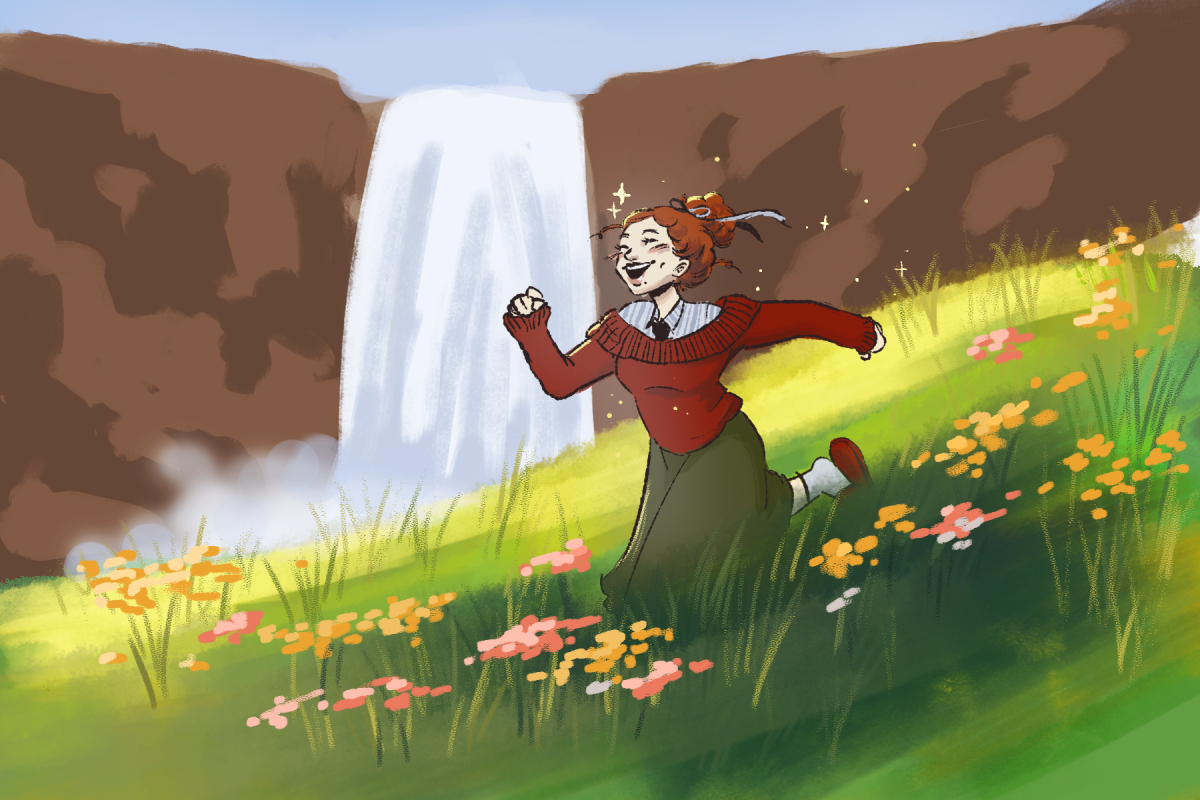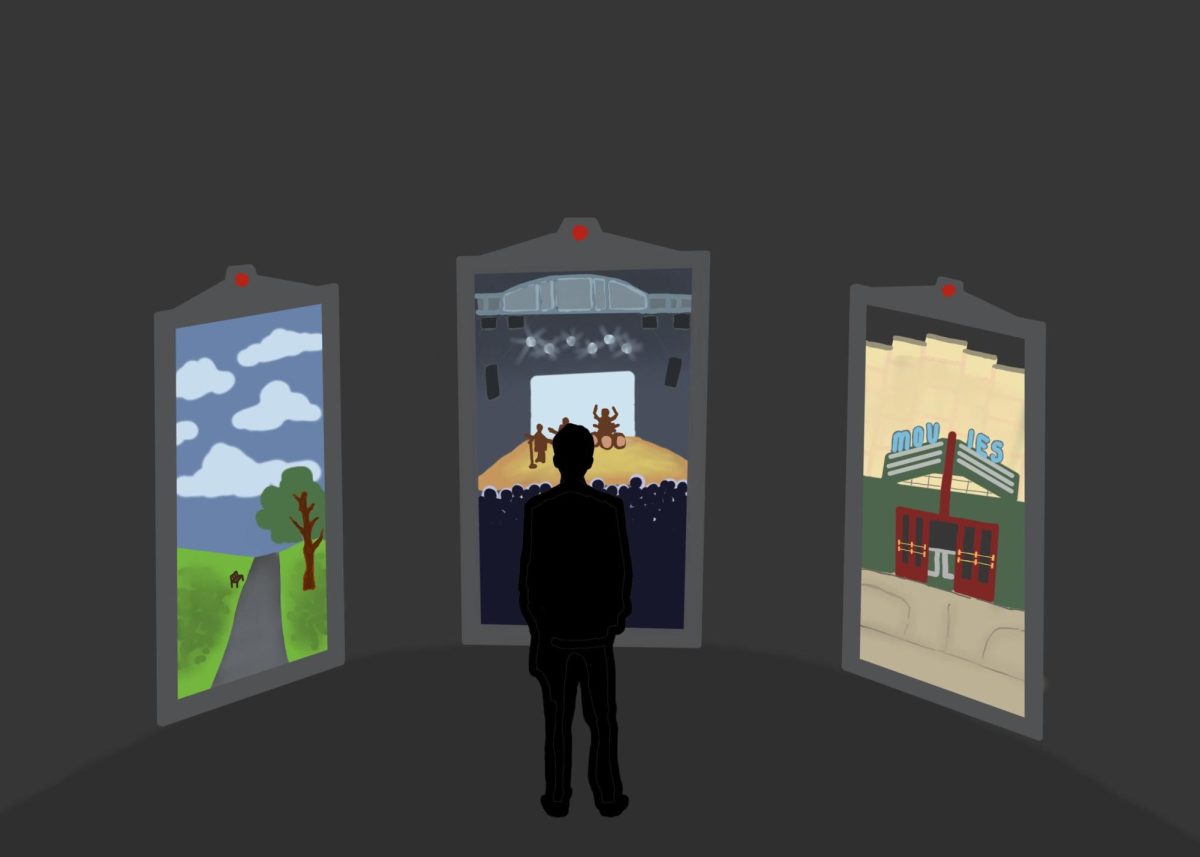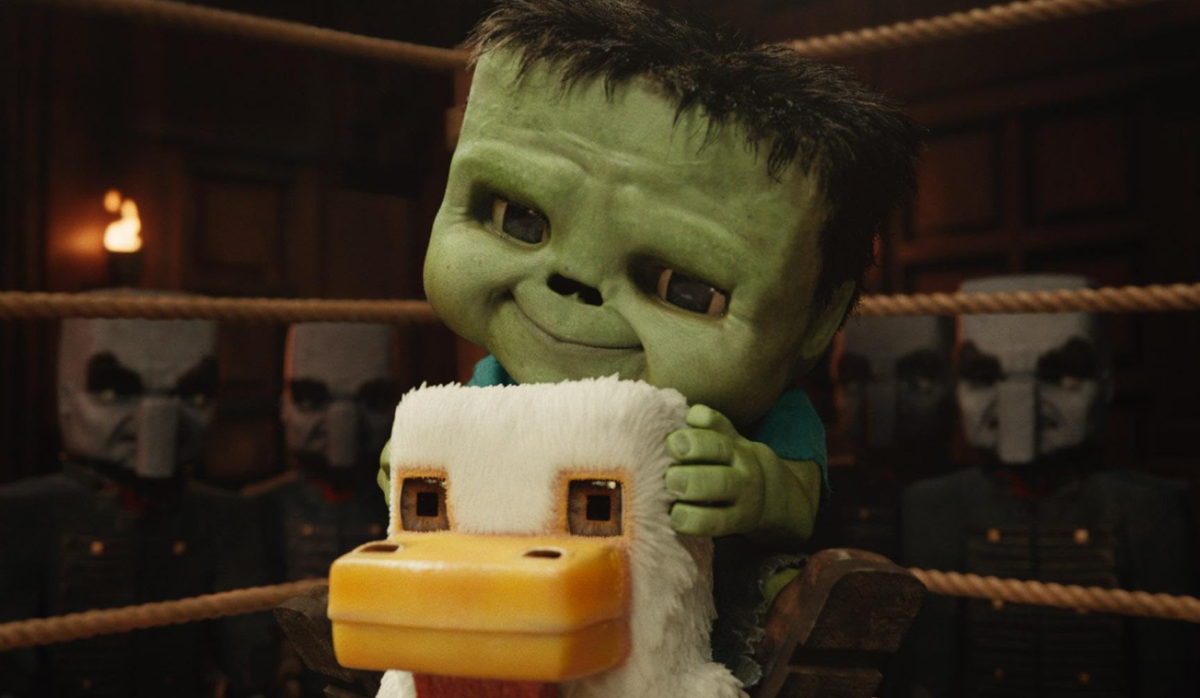About a year before I left home to attend Texas A&M, I remember hearing my 11-year-old sister singing a song that I had never heard before. I wasn’t quite sure what I was listening to, but interspersed throughout the bizarre and repetitive melody was one word that I could clearly identify: “skibidi.”
What the hell is a skibidi? I asked her to find out.
She promptly pulled out her phone and showed me a video with a weird head sticking out of a toilet, which she called a “skibidi toilet.” I wasn’t sure what to make of it, and she told me she didn’t really know what it was either — she just liked the song.
Since that time, Skibidi Toilet — the video series from which this song came — has taken the world by storm. Most people would have you believe that the consumption of this “brainrot” is corrupting the minds of children everywhere, degrading their ability to think critically as they waste time repeating the bizarre and repetitive songs found throughout this series of strange videos.
In the past, I would have agreed with them.
However, times have changed. It has become clear to me that the Skibidi Toilet video series is actually an innovative work of artistic expression which does not merit any more hatred than the likes of Michelangelo’s “David” or F. Scott Fitzgerald’s “The Great Gatsby.”
Skibidi Toilet is uniquely pleasurable to watch, providing the benefits of artistic beauty as well as basic enjoyment. It is for this reason that I believe those who oppose Skibidi Toilet do so simply because they find it grotesque or bizarre; they have no interest in studying what will likely become one of the greatest works of art in history, preferring to live in ignorance.
They have no idea what they’re missing.
For the unenlightened: Skibidi Toilet is a series of videos detailing the conflict between two kinds of creatures, the toilets and the cameramen. The story begins when the skibidi toilets invade Earth, quickly eliminating any form of human life.
In response, the cameramen, who are not human themselves but instead have human bodies with camera heads, fight back to defend the Earth from invasion. Much of the plot is concerned with the advancement of technology that the cameramen undergo to continue the fight against the skibidi toilets. They are in a continual arms race: It is the natural evil of the skibidi toilets versus the technological sophistication of the cameramen.
As phenomenal as the skibidi narrative might be, I am not here to recount the entire plotline. The point of my exposition is to show that, behind its simple brainrot facade, this series is masterfully detailing a timeless narrative we see in our own world: The evolution of humanity from a species of natural barbarity to one of social and technological enlightenment.
Simply put, we are not in a battle of toilets and cameras, but in an analogous battle between machines and mankind. Skibidi Toilet suggests that we should endeavor to use technology to resist the evils and prejudices of our own nature. Those people who do not use technology and social engineering to improve themselves and others will be left behind, while those who do will ascend and become enlightened.
What is uniquely subversive about watching Skibidi Toilet is that we inadvertently do exactly what it tells us to do when we enjoy it. We engage in a new manifestation of technology — short-form video content — and improve ourselves in exactly the same way the cameramen improve themselves. Those who oppose Skibidi Toilet simply prefer to wallow in their barbarity; they are no better in the grand scheme of things than those who opposed the first novels or the theory of heliocentrism.
More than that, Skibidi Toilet is a greatly enjoyable form of art, unlike a lot of great works of the past. Previously, to enjoy a great work of art, one had to endure pages and pages of grueling text or long winded explanations about what a sculpture meant. Let’s be honest, everyone hated the reality of having to read Dostoevsky’s “The Brothers Karamazov” or having to listen to a tour guide’s speech about the sculptures at the Louvre. We want high-intensity entertainment and art at the same time, and Skibidi Toilet’s new medium of short-form content has permitted this.
Maybe you aren’t sold on Skibidi Toilet. Maybe you wouldn’t enjoy it, or maybe you don’t want to appreciate real art. That’s fine, and I’m not telling you that you have to. But next time you see someone singing the Skibidi Toilet song, pay attention to what’s really going on.
More likely than not, it’s not a mindless chant: It’s an anthem that expresses the struggle of the human experience. Everything that opposes that anthem is wrong, and everything that agrees with it is redundant because it is already contained within.
This is the perfect — yet almost nihilistic — end point of skibidi: It is the first and last form of artistic expression that we will ever desire or need; a final chapter to the thousands of years of weak imitations that humanity has made in preparation for this final moment.
Kaleb Blizzard is a philosophy sophomore and opinion writer for The Battalion.











Drdiddy • Apr 4, 2025 at 1:21 pm
Dr diddy from ohio
John • Jan 2, 2025 at 8:36 am
Clearly this was a philosophy homework assignment. D-
Brody S • Feb 7, 2025 at 2:34 pm
gyaaaaaaaaaaaaaaaaaaaaaaaaaaaaaaaaaaaaaaaaaaaaaaaaaaaaaaaaaaaaaaaaaaat
skibdi mzn • Dec 6, 2024 at 2:49 pm
I love sjibidi toilet ooosooooo mcunh he solos jesus
skibidiloveeer • Dec 6, 2024 at 1:31 pm
agreed, fellow sigma
Raphael • Dec 4, 2024 at 8:56 am
This is why people don’t like college sophomores.
Brother Skibidi • Nov 22, 2024 at 9:24 pm
I deeply felt with this post. The way the writer persuasively presents their arguments in a sure-found way leaves me with nothing but awe at my new respect for skibidi toilet! Thank you for showing me something so beautiful! amazing article!!!
ethan • Nov 15, 2024 at 2:47 pm
Ermmmm.. what the actual sigma, skibidi toilet is the worst show ever.
sigmaboifromohio • Feb 12, 2025 at 12:25 pm
how dare you dr diddy disrespect my lord and savoir skibidi toilet you beta. I will be making sure you get fired and become homeless
alex • Feb 18, 2025 at 1:30 pm
that’s a child…. not- not- a twettny yr old, ur could be diddys brother 4 all we now, tbh YOUR probably homeless And YOU js got fired gah dayum